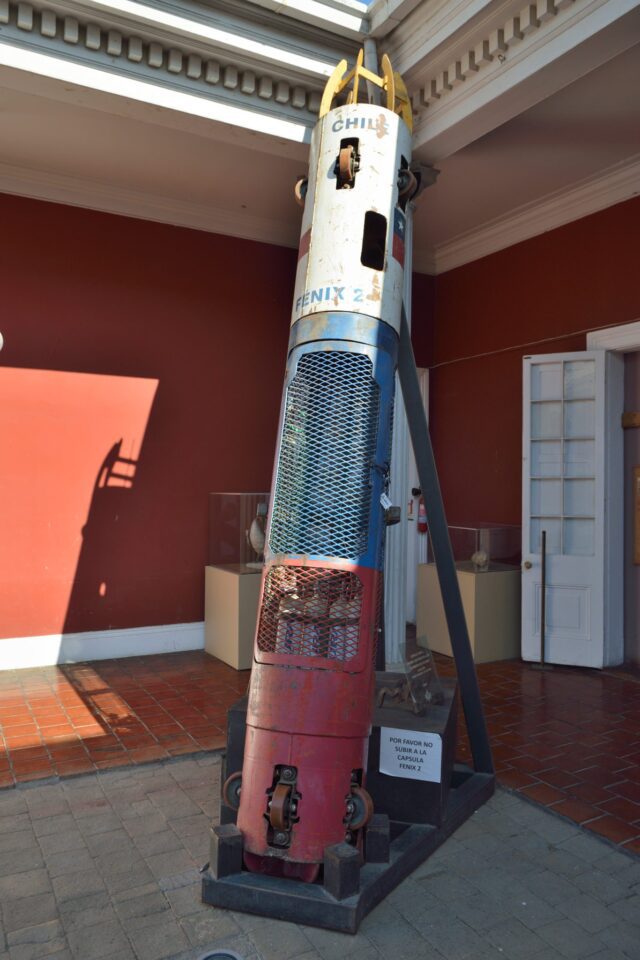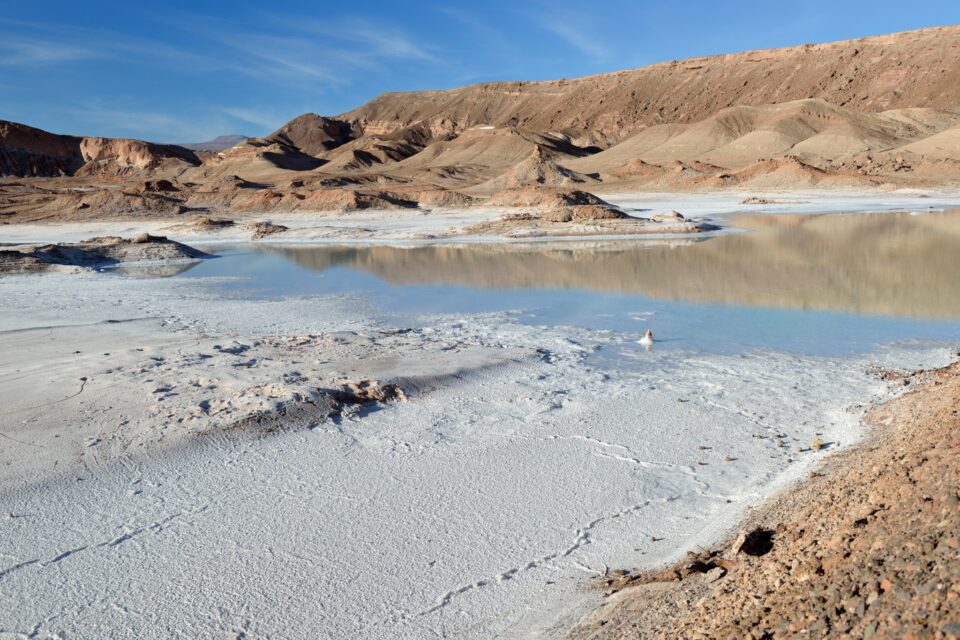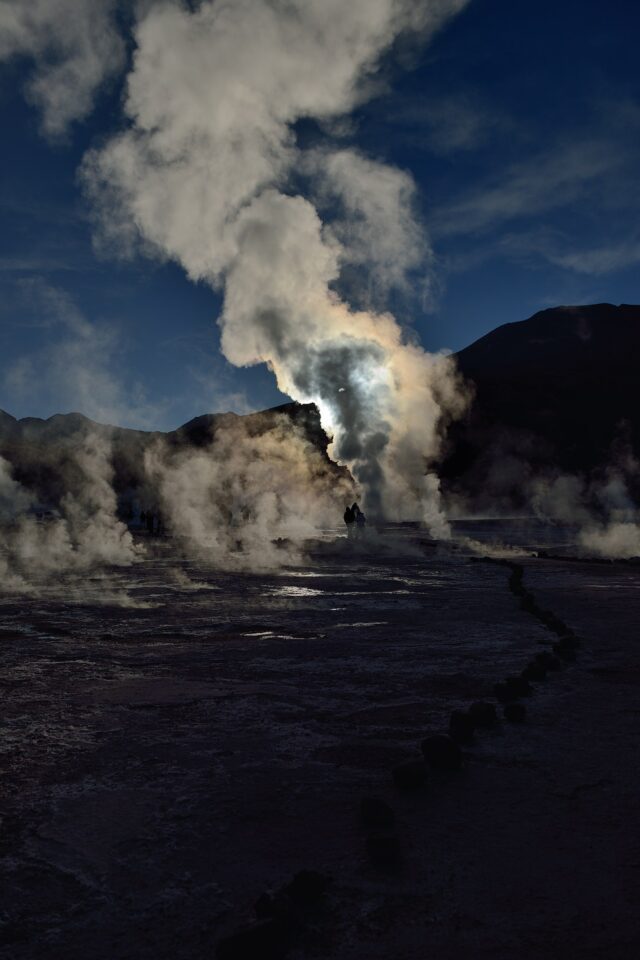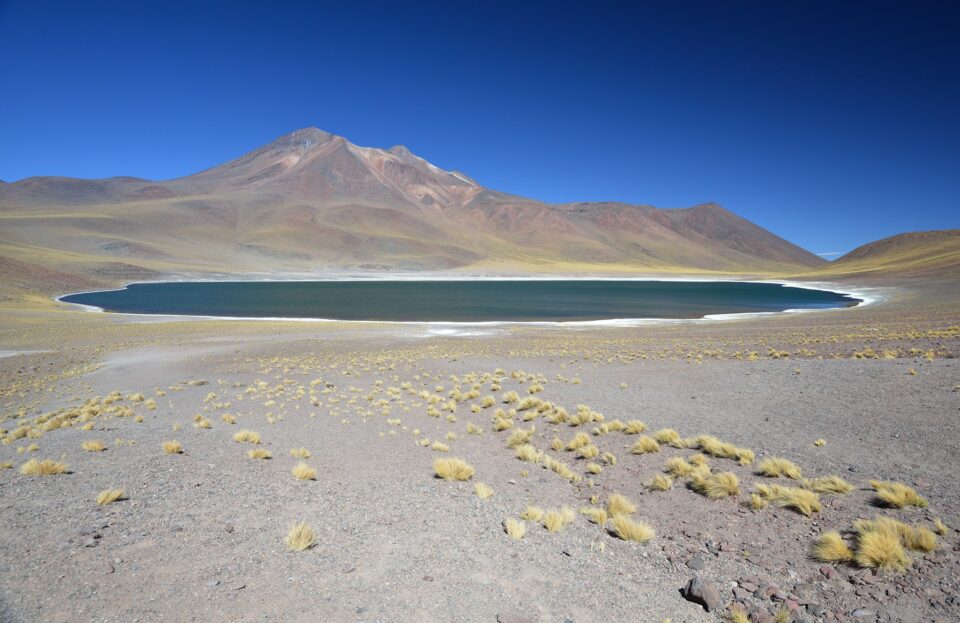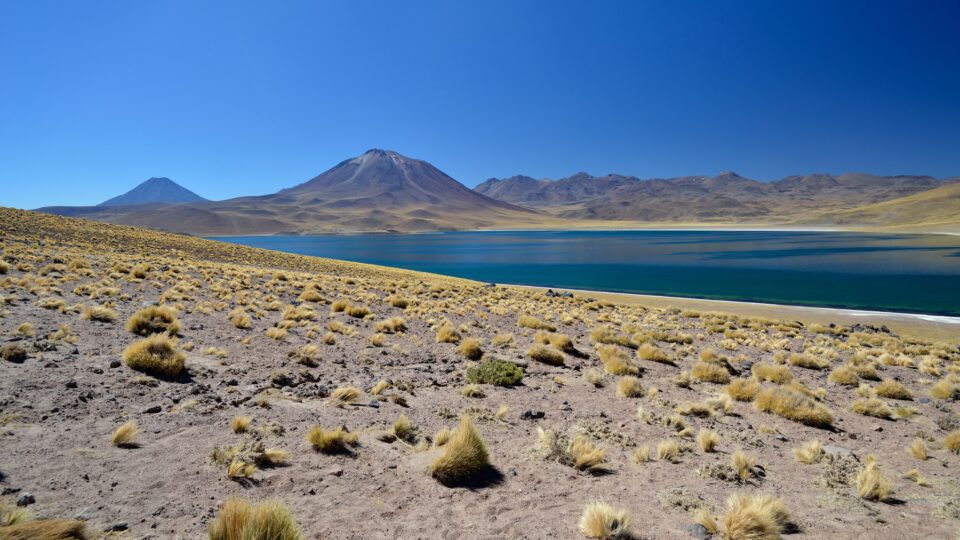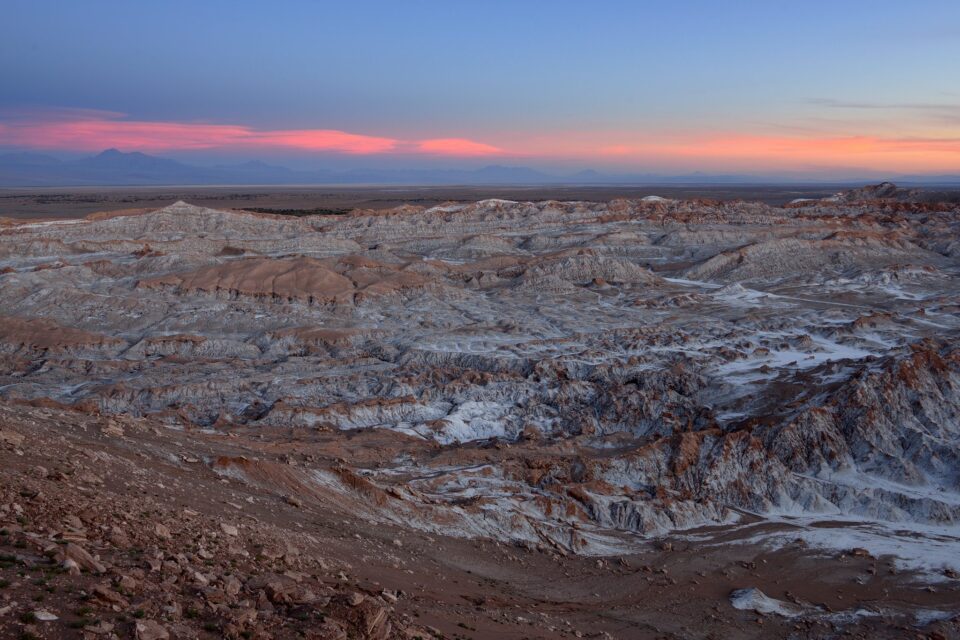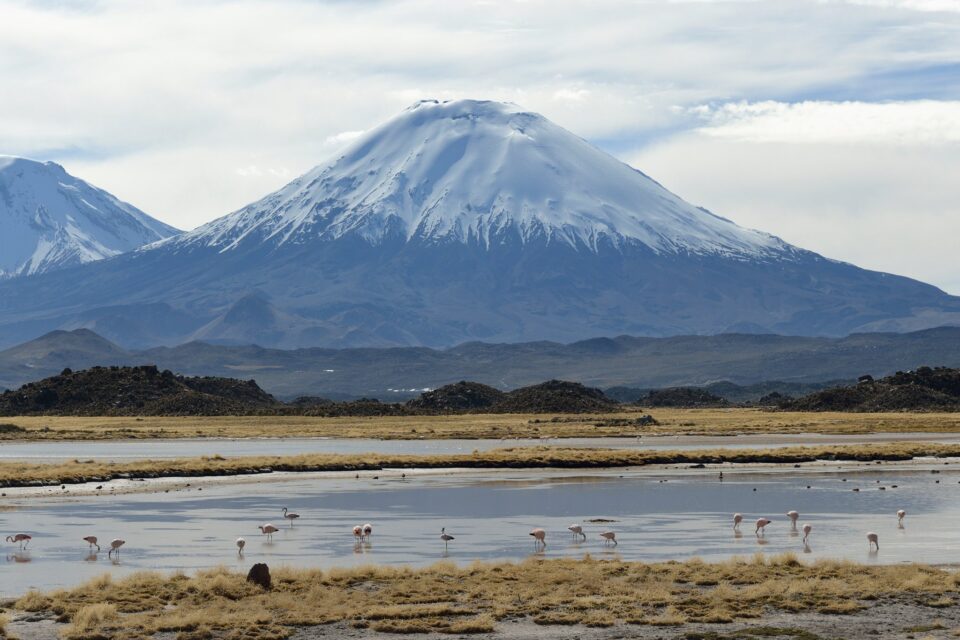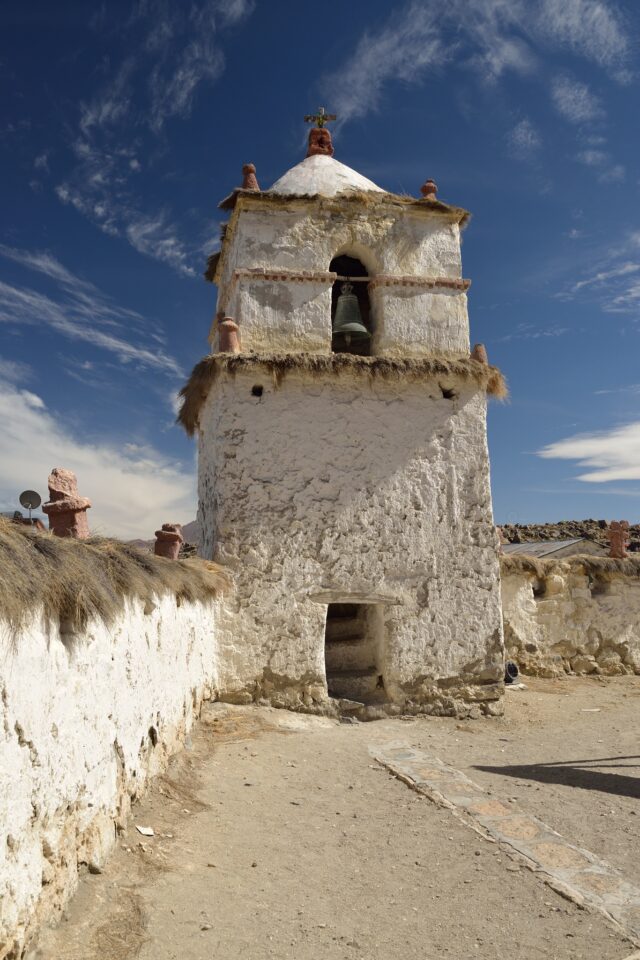Being married to a university professor has its advantages (and disadvantages, but this is not the time or place…), the most important being the international conferences and research trips. After-all, if one airline ticket and hotel is already paid for, it makes sense to buy another ticket and make a holiday of it, right? So when my wife announced a research visit to Chile in 2013, I didn’t need much encouragement to join her once most of her work was done. The only condition was that she would still need to spend several days of our time together working, and during that time I would be her “official photographer”. Since these “work days” would be at abandoned nitrate mines in the middle of the Atacama desert, you might wonder what the attraction was – but the prospect of “leisure” days looking at volcanoes, salt lakes and mountains soon persuaded me.
This was the first serious trip for my beloved Nikon D800, with a trio of lenses – Nikon 16-35mm f4, Nikon 24-70mm f2.8, and Sigma 120-400mm. And having taken notice of people (especially Thom Hogan) saying your shooting discipline has to be sky-high to take full advantage of the camera, I also packed tripod and remote-release, and used the 3” shutter delay wherever possible. Were the results worth it? Read on…
Our first stop was Copiapo, a mining town.
Not hugely interesting (with one exception), but a useful base for day-trips up into the Andes. Here’s the exception. Remember the Chile mine rescue – where they drilled an emergency shaft and pulled the 31 trapped miners up, one at a time? This is the actual rescue pod they squeezed into:
And the real reason for staying in Copiapo? – a couple of hours drive away, up into the mountains.
So much to shoot! From amazing vistas to stunning details. At this altitude, the air is crystal clear, and the light amazing. Apart from one minibus which showed up, and left within 20 minutes, we and our guide had the place to ourselves. Can you imagine that in Yosemite?
Next day was a trip to the coast. Miles of pristine beaches – but deserted.
Maybe not so surprising when you realise the water is freezing cold. Cold enough for a colony of Humboldt Penguins…
Though the pelicans might have preferred a bit more warmth…
After Copiapo, we flew up to Iquique, situated like the other (few and far between) coastal cities on a narrow strip of land at the base of a 3000 foot slope.
It might look like a great place for a beach holiday (and it is popular with Chileans) – but with a cold sea and regular earthquakes (tsunami evacuation routes are clearly marked!), I don’t suppose it will rival Miami or Rio anytime soon.
Then a few days of work and my duties as ‘official photographer’ – more on that in another post? OK, maybe a couple of desert vistas for now:
Next holiday stop was San Pedro de Atacama. A few miles out, we came across this ‘salar’ (salt lake/flat) just by the side of the road:
San Pedro is a tourist town, full of back-packers (and new-agers), but still pretty, with everything low-rise and using local materials
One of the big draws (OK, the big draw) of San Pedro is a pre-sunrise trip up (14 000’) to the El Tatio geysers. These vents are only ‘active’ from an hour or two before sunrise until an hour or so after. Shooting was a real challenge, from the dark (pre-sunrise, remember?), to the freezing temperatures, the hordes of people getting in your shots, and (once the sun appeared) the extreme dynamic range. It was El Tatio more than anywhere else that convinced me I’d made the right choice with the D800. I think the extreme range of this shot – from the disc of the sun through the steam, to black (to the naked eye) shadows on the ground, with nothing lost or blown out – is something only the D800 could have captured.
I will confess – fumbling around in the cold and dark, I did end up hitting the White Balance (rather than ISO) button, and switching to something weird. The rest of that day’s photos looked rather more dramatic than intended – thank goodness for the easy re-set in Capture NX2!
The geysers are not the only draw from San Pedro. To the south is the Salar de Atacama, the biggest salt flat in Chile:
To the south-east, the twin lakes of Miscanti and Miniques:
To the east, and up into the Andes, more lakes and volcanos:
And to the west, the Valley of the Moon:
For the final chunk of holiday, we headed up to Arica, on the border with Peru. From there, our guides took us back up into the mountains for more volcanos, lakes and wildlife – and again, no other humans in sight…
So how did the gear perform? Well, the Nikon D800 and the Nikon 24-70mm f/2.8 were great and I love the results (though now I have the stunning Sigma 24-35mm Art, I can’t help wondering how much better they could have been). The Nikon 16-35mm f/4 was disappointing – not so much the quality, but more the range. Somehow 16mm was never quite wide enough, so as soon as we got home, it was traded in for the Nikon 14-24mm f/2.8 – an absolutely amazing lens, which always draws looks and comments from other photographers, especially with the huge Fotodiox 145mm filter out front!
The Sigma 120-400mm was a real let down. It used to produce acceptable results on my old D300S, but it’s nowhere near sharp enough for the merciless D800. Did I mention days doing “work” photography? – to my surprise, they were amazing too! But I think that must wait for the next post…
This guest post was submitted by Alan Mosley. To see more of his work, please check out his online gallery #1 and gallery #2.
The post The Atacama Desert: Perilous for Humans, Great for Cameras appeared first on Photography Life.



